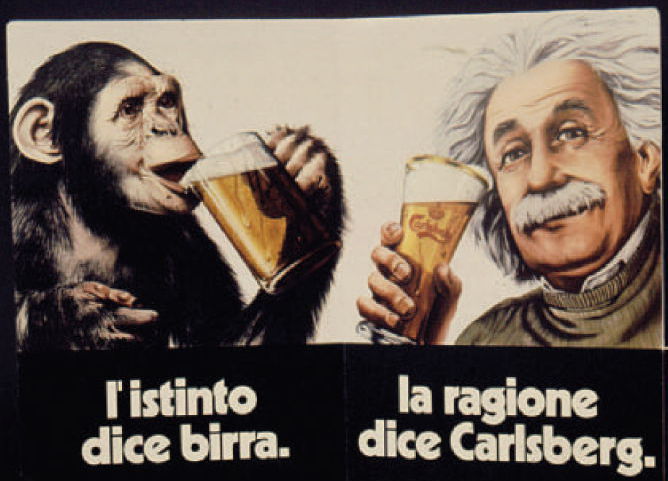The beer brewing and the technical inventions.
The mythical beer is said to have originated from a few seeds thrown into a hole filled with water, a risky porridge metamorphosed into a delicious beer by the sun's rays. A Chinese legend tells this story (Grand Khan). Men and monkeys are the actors!
Beer, in other words the brewery, does not exist without the ingenious help of humans.
The history of the brewery is a long line of technical innovations. As early as the Neolithic period, the brewery has been constantly adapting to the changing nature of economics and social organisations. Contrary to popular belief, the brewery has been innovating since its birth. No brewery without intelligent grain management. No beer can be brewed without at least a minimum mastery of technology, which does not presuppose any scientific knowledge.
The early beer brewing emerges with the following basic techniques:
- Containers: wooden troughs / earthenware
- Cooking (optional): fire, heating devices, fireproof terra cotta
- Sieves/filters (optional): wickerwork, weaving
The rudimentary nature of this technological base should come as no surprise. The brewery is first and foremost a biotechnology. Vats, pots and ladles count less than the decomposition of starch. A cold brewing process can be carried out in wooden troughs. The pottery is needed for brewing purposes in the form of grain storage jars or primitive silos.
From the Neolithic period onwards, the main technical leaps are shown in the table below that does not include :
- the many different material devices invented over thousands of years.
- the old or modern types of beers
- the innumerable third-party techniques applied in brewing since the 19th century: sterilisation (physical or chemical), genetics, enzymology, industrial automation, computers, etc.
|
-7000 |
Technical base: pottery, wickerwork, grinding stone Common core of combined fermented beverages based on mixed honey-sap-fruits-berries-starchy fruits-grains-tubers and starchy roots-milk(?). |
China, Mesopotamia. Or later according to the beer brewing basins |
|
-5000 |
Beer stands out from the combined fermented beverages honey-fruit-grain. Beer = starch saccharification. |
China, Mesopotamia (others brewing basins later on) |
|
-5000 |
Insalivation of cooked grains or tubers. Leaven for brewing (?). |
China, Mesopotamia |
|
-4000 |
Malting of cereals. Later for other brwing bassins |
Mesopotamia (munu4) Egypt (bš3 = bcha) |
|
-4000? |
Invention of the hot brewing . Cooking (optional) of the brewing ingredients or the wort (if malting) |
China, Mesopotamia |
|
-3000 |
Invention of the half-processed and storable brewing ingredients (dry cake, beer bread, malt bread, groats/semolina) |
Mesopotamia |
|
-2500 |
Filtering straw to drink the beer |
Mesopotamia |
|
-2000 (?) |
Acid hydrolysis correlated to the mixed fermentations (lactic, alcoholic) of the combined fermented food-beverages from grain and dairy. |
Indo-European nomadic pastoralists |
|
-2000 |
Recycling of the dregs, wet or dried spent grains from the brewing process to feed domesticated animals. |
Mesopotamia |
|
-2000 |
Control of the brews using ratios: vol. grains/vol. beer (paleo-babylonian) or vol. grain + vol. dates/vol. beer (Egyptian) |
Mesopotamia Egypt |
|
-1000 (?) |
Invention of amylolytic ferments. |
|
|
- 500 (?) |
Beer is filtered by clarifying or filtering. |
China/India? |
|
- 500 (?) |
Africa |
|
|
-100 |
The wooden barrel to carry / keep the beer |
The Gaul |
|
7th century |
Variation of wort density by consecutive washes of the mash |
Carolingian Europe and breweries in the monasteries |
|
8th century |
Weighting of the beer ferment volume according to the desired strength of the beer. |
China (Dunhuang Buddhist communities) |
|
9ème century |
Hops become a beer flavouring and preserving agent. |
Central Europe, Carolingian empire |
|
1000 (?) |
Invention of the amylolytic loaves with a cassava or sweet potato substrate. |
Guyanas/Brazil |
|
15th century |
The bottom fermentation. Origin of pils and lager beers at the end of 19th century. |
Bohemia, Bavaria |
|
Around 1715 |
Temperature control during the malting / brewing steps with a thermometer (Fahrenheit/Combrune). |
Netherlands, England |
|
1831 |
Preservation of beer, wine and milk by heating (Nicolas Appert). A process later renamed "pasteurisation". |
France |
|
1843 |
Control of yield (saccharification) and apparent attenuation (alcoholic fermentation) with the densimeter (Carl Balling) |
Bohemia (Prague) |
|
1871 |
Bacteriological protection of the wort to be fermented (Pasteur) |
France |
|
1873 |
The new invention of artificial refrigeration is applied in brewery (Carl von Linde) |
Bavaria (Munich) |
|
1880-90 |
Cultivation of strains of pure yeasts (Emil Hansen) |
Denmark (Carlsberg Laboratories), then Bavaria and Bohemia |
|
20th century |
Enzyme extracts to trigger "artificial" saccharification |
|
|
Since the 1970s |
Continuous fermentation developed for industrial breweries. |
|
|
Since the 1980s |
Complete automation of the brewery: beer factory. |
USA, Europe |
Some of the brewery's major technical inventions since its inception.



